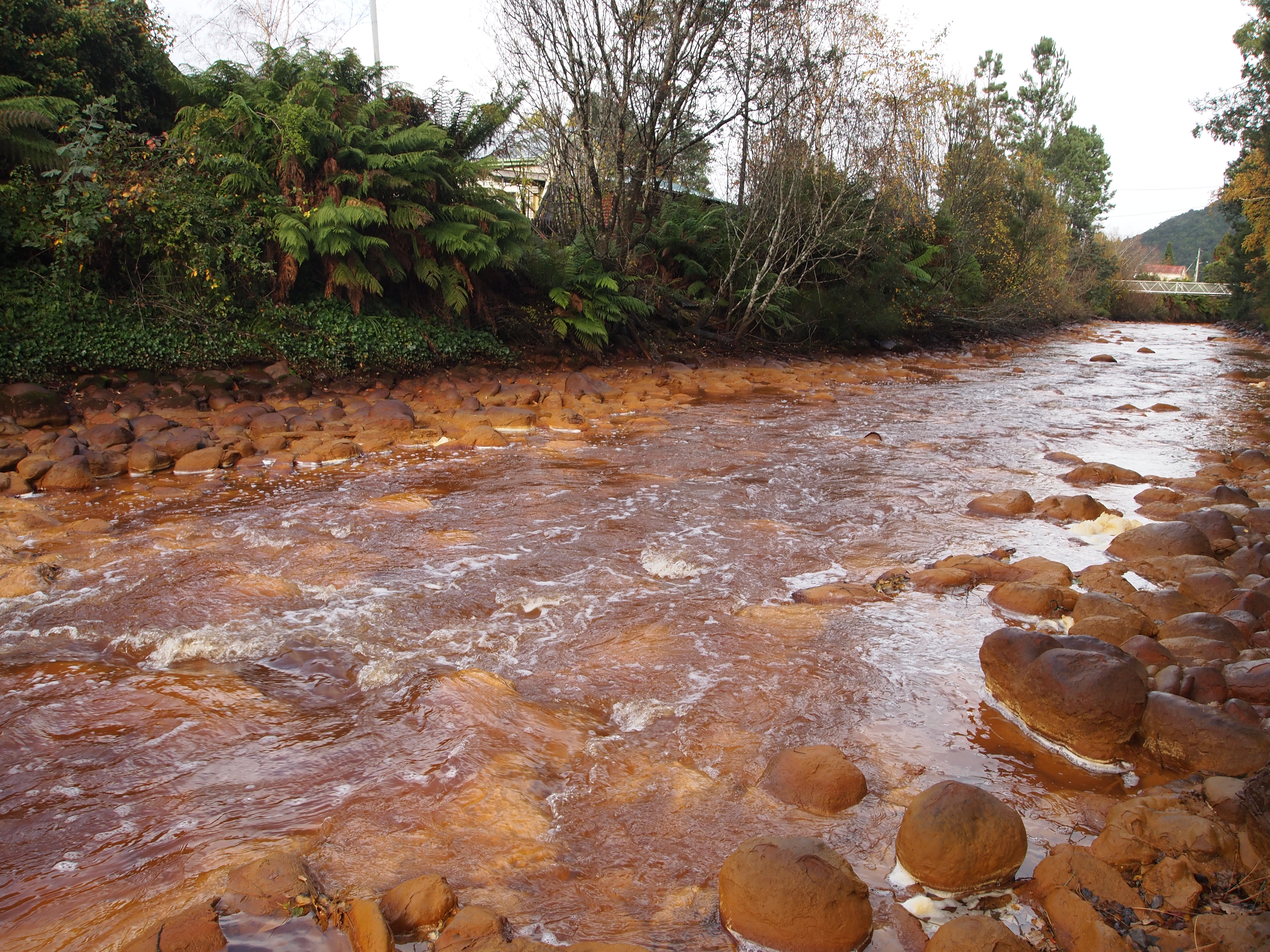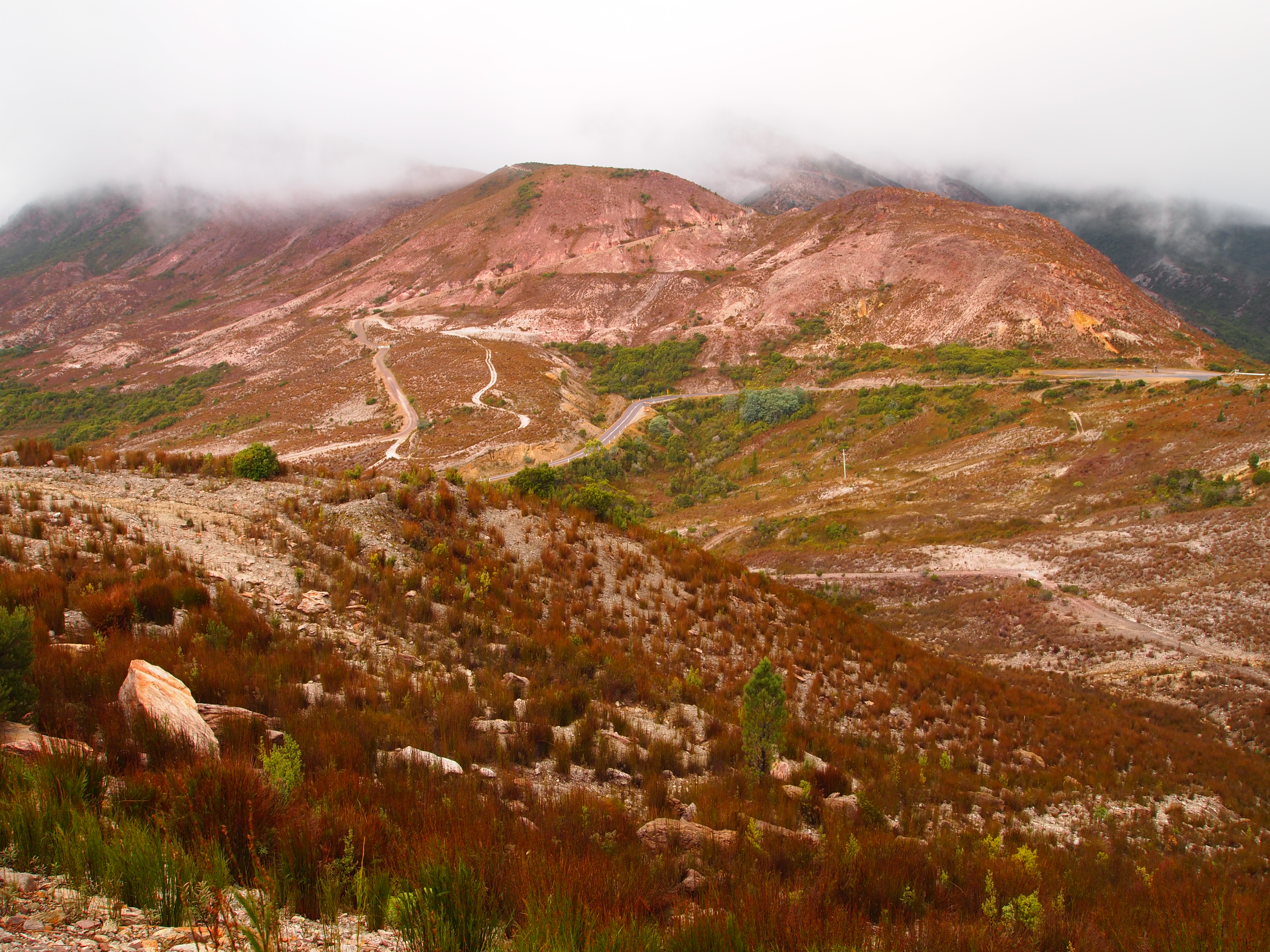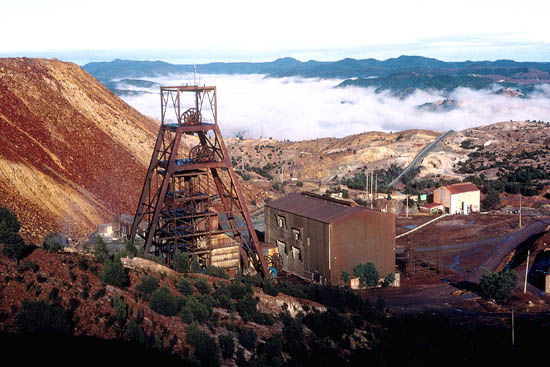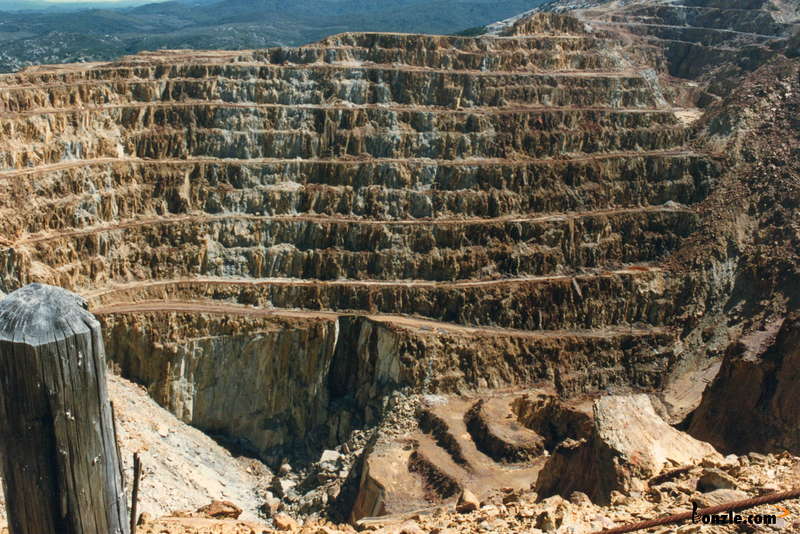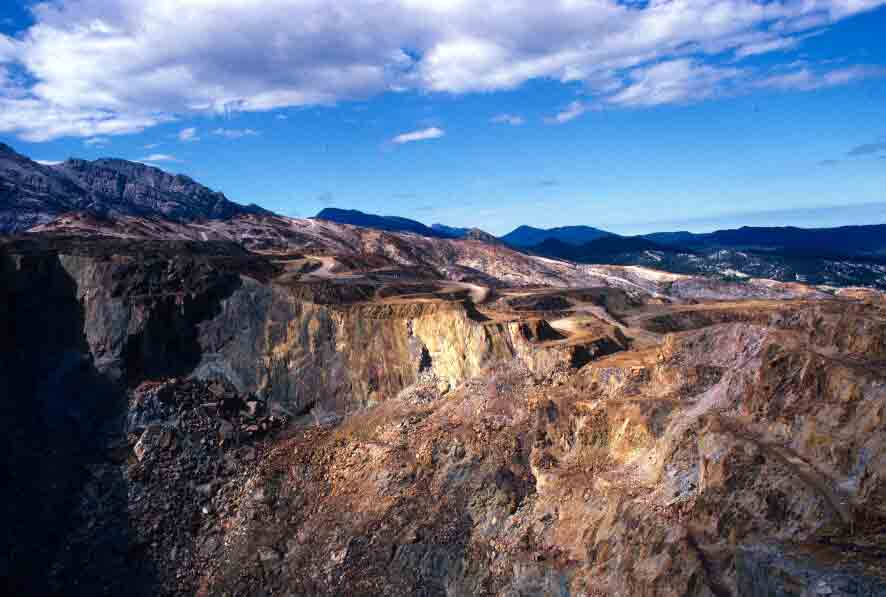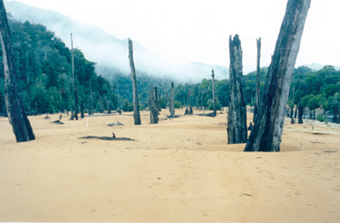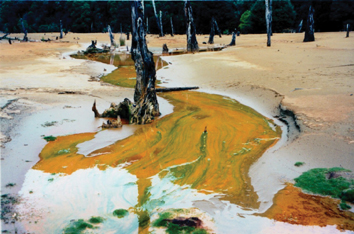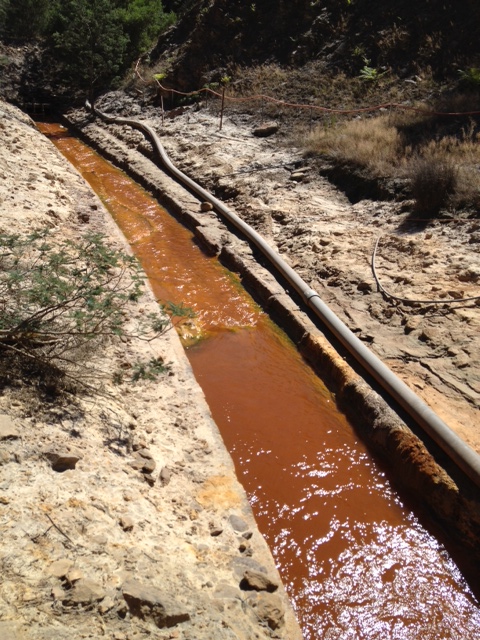Mine Name: Mt Lyell
State: Tasmania
Status: Historic
Mineral: Gold, Copper
Brief description of impact/history
Mt Lyell is a copper mine in the north west of Tasmania it was originally operated by the Mt Lyell Mining and Railway Company as a gold mine. It operated for over 100 years, 1893 – 1994 disposing of the mine waste/ tailings directly into the King River. The acid producing rock or sulphides which are common with copper ore and waste rock has devestated the King river through the chemical process known as acid mine drainage (AMD). AMD and heavy metal contamination from this mine continues to occur and impact on the King River, Queen River and Macquarie Harbour.
In 1994 the mine was abandoned, shortly after through an agreement with the State of Tasmania the mine was signed over to Copper Mines of Tasmania who then developed an underground mine known as Prince Lyell. In 1999 following financial difficulties CMT sold M tot Lyell an Indian company – Sterlite Industries who have developed the mine further. The current mining operating at Mt Lyell includes the mining and milling for copper, gold and silver. The underground mine is 1000 meters deep with a 6.5 kilometre decline to the crusher. Ore is crushed underground and then lifted up 600m up a shaft.
Riverine tailings disposal, the dumping of tailings into river systems at Mt Lyell stopped in 1994. The current mine disposes of tailings in a tailings dam at Princess Creek, a dam designed and constructed by Shaw Contracting.
In 1996 the Tasmanians Supervising Scientist published a remediation report outlining the options for addressing the AMD of King River. The summary of the main four options included: do nothing, remove the tailings, treat or stabilise the tailings on site, or a combinations of removal and stabilisation. Many other reports and studies have followed but there has been little to no action in actually attempting to stop the AMD.
In 2013 the Tasmanian Government is still exploring options on how to reduce AMD from Mt Lyell. It is expected to cost $16 million and the Tasmanian Government can’t or won’t find this money to begin a clean up.
The Tasmanian EPA is taking a lead role in addressing the issues and the current mine operators have been absolved from responsibility to clean up the legacy of previous miners. The EPA are currently exploring commercial options to reduce the AMD by asking for commercial proposals to extract metals from the source of the AMD.
In 1996 the supervising scientist wrote “the ‘do nothing’ approach does not address any of the environmental problems created by the presence of the tailings and is not recommended” since this was written essentially nothing has been done. This is a clear example of current policy deficiency in addressing legacy mine sites where there is serious environmental destruction and a clear threat to public health.
Photographs provided by Isla McGreggor
References
Dealing with the legacy of acid rock drainage, Dr Jeff Taylor and Nigel Murphy http://www.wme.com.au/categories/water/oct8_05.php
Mine ownership details, Mineral Resources Tasmania, http://www.mrt.tas.gov.au/portal/page?_pageid=35,831249&_dad=portal&_schema=PORTAL
Details on current mining operations http://mininglink.com.au/mine/mount-lyell
Supervising Scientist report on the remediation of King River http://www.environment.gov.au/ssd/publications/ssr/pubs/ssr119-full-report.pdf
EPA website – Mt Lyell Acid Drainage Remediation http://epa.tas.gov.au/epa/mt-lyell-acid-drainage-remediation
Shaw Contractors http://www.shawcontracting.com.au/client-assets/documents/contract_mining/Princess%20Creek%20Tailings%20Dam.pdf
Stelite Industries – annual reports and other information http://www.sterlite-industries.com
